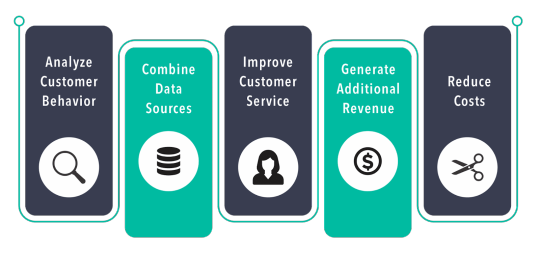Text
🏢Unraveling the Essentials of Master Data Management🏢
In the vast landscape of modern business, where data reigns supreme, the concept of Master Data Management (MDM) emerges as a guiding light. It's not merely about managing data; it's about orchestrating the symphony of information that flows through an organization. MDM serves as the cornerstone of data governance, ensuring accuracy, consistency, and reliability across disparate systems and processes. In this article, we delve into the intricacies of MDM, exploring its significance, challenges, and best practices.
Understanding Master Data Management
At its core, Master Data Management revolves around the management of critical data entities, often referred to as "master data." These entities encompass core business objects such as customers, products, employees, and suppliers. Unlike transactional data, which is short-lived and volatile, master data represents the foundational elements of an organization's operations.
MDM endeavors to create a single, authoritative source of truth for master data, eliminating redundancy and inconsistency that may arise from siloed systems and decentralized management. By centralizing master data, organizations can streamline operations, enhance decision-making, and foster a unified view of their business landscape.

🌟The Significance of MDM
The importance of Master Data Management extends far beyond mere data organization. It underpins various strategic initiatives and operational functions within an organization:
Data Quality Enhancement: MDM facilitates data cleansing, standardization, and enrichment, ensuring that master data remains accurate, complete, and up-to-date. By maintaining high-quality data, organizations can mitigate errors and minimize operational risks.
Regulatory Compliance: In an era marked by stringent data regulations, such as GDPR and CCPA, MDM plays a pivotal role in ensuring compliance. By establishing data governance frameworks and implementing robust data security measures, organizations can safeguard sensitive information and adhere to regulatory requirements.
Improved Decision-Making: By providing a unified and consistent view of master data, MDM empowers stakeholders to make informed decisions based on reliable information. Whether it's assessing customer preferences, optimizing inventory levels, or identifying market trends, accurate master data serves as the bedrock of strategic decision-making.
Enhanced Customer Experience: In today's hyper-competitive landscape, delivering personalized experiences is paramount. MDM enables organizations to gain a holistic understanding of their customers, facilitating targeted marketing initiatives, tailored product recommendations, and seamless omnichannel interactions.

🌟Challenges in MDM Implementation
Despite its myriad benefits, implementing a robust MDM strategy is not without its challenges. Some common hurdles include:
Data Fragmentation: Organizations often grapple with disparate data sources and systems, leading to data fragmentation and inconsistency. Bridging these silos requires careful planning and integration efforts.
Change Management: MDM initiatives entail organizational changes that may face resistance from stakeholders accustomed to existing processes. Effective change management strategies are essential to garner support and drive adoption across the organization.
Data Governance: Establishing clear policies, roles, and responsibilities for data governance is imperative in ensuring the success of MDM initiatives. Lack of governance frameworks can result in data quality issues and hinder the attainment of MDM objectives.
Technology Complexity: Selecting the right MDM technology stack amidst a plethora of options can be daunting. Organizations must evaluate their requirements carefully and choose solutions that align with their scalability, interoperability, and security needs.

🌐Best Practices for MDM Success
To navigate the complexities of Master Data Management effectively, organizations can adopt the following best practices:
Define Clear Objectives: Start by defining clear objectives and aligning MDM initiatives with overarching business goals. Whether it's improving operational efficiency, enhancing customer experience, or ensuring regulatory compliance, clarity of purpose is paramount.
Establish Data Governance: Develop robust data governance frameworks encompassing policies, procedures, and accountability mechanisms. Foster a culture of data stewardship and collaboration to uphold data quality and integrity.
Invest in Data Quality: Prioritize data quality initiatives to cleanse, standardize, and enrich master data. Leverage data profiling tools to identify anomalies and discrepancies, and implement data cleansing workflows to rectify issues proactively.
Embrace Agile Methodologies: Adopt agile methodologies to iteratively develop and refine MDM solutions. Break down complex initiatives into manageable increments, allowing for rapid feedback and course correction as needed.
Cultivate Stakeholder Buy-In: Engage stakeholders across the organization and communicate the value proposition of MDM initiatives. Solicit feedback, address concerns, and demonstrate tangible benefits to garner support and foster a sense of ownership.
Invest in Scalable Infrastructure: Select scalable MDM platforms that can accommodate evolving business requirements and accommodate future growth. Embrace cloud-based solutions for flexibility, scalability, and cost-effectiveness.
🌐Conclusion
Master Data Management serves as the linchpin of modern data-driven organizations, providing a foundation for data integrity, governance, and decision-making. By centralizing and harmonizing master data, organizations can unlock a myriad of benefits, from enhanced operational efficiency to improved customer experiences. While challenges abound, adherence to best practices and a steadfast commitment to data excellence can pave the way for MDM success in today's dynamic business landscape.
1 note
·
View note